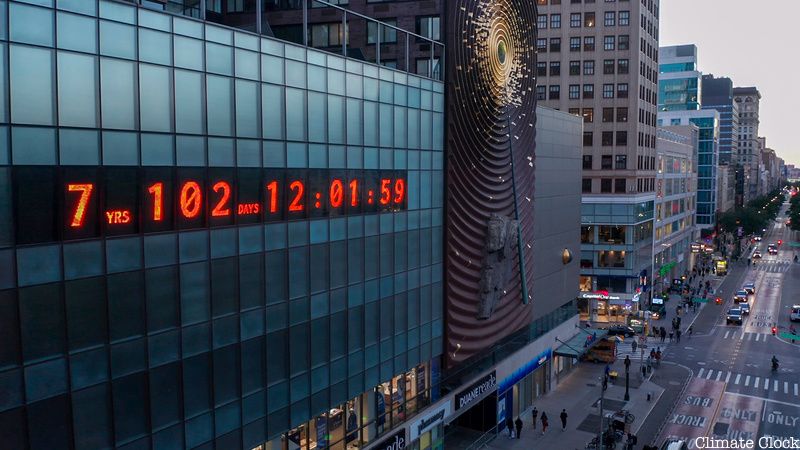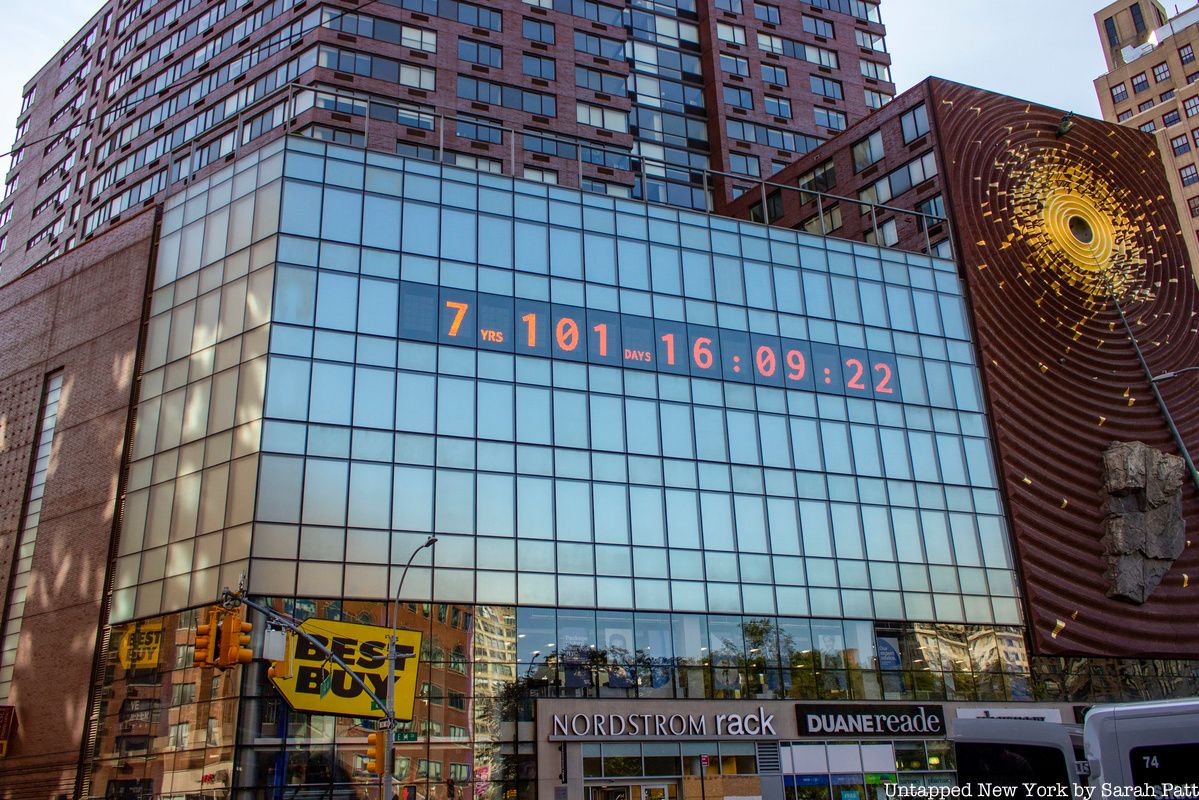Koryo Books: Where K-Pop Fans and Book Lovers Converge in NYC
Established over 40 years ago, this Koreatown store has evolved from a community bookshop into a global cultural destination!


Since 1998, a clock in Union Square has been confusing people with its meaning. Commonly thought to be a national debt clock (an actual one is in Midtown), the clock is part of an art installation called Metronome and until a few days ago counted up the 24 hours in the day and showed the time left in the day. But now, as part of the lead up to Climate Week, the Union Square clock has been repurposed as a “Climate Clock” showing what time the world has left to take action on climate change. That would be 7 years, 100 days, and a number of hours and seconds left.
The Climate Clock in Union Square is part of a larger initiative, which has involvement from activist Greta Thunburg. The first went up on a former oil tank in Berlin in 2019 and there is one planned for Paris in 2021. You can also make your own through instructions on the organization’s website, and Thunburg was gifted the first-ever Climate Clock ever made.

Photo by Ben Wolf, courtesy Climate Clock
We interviewed Andrew Boyd, the co-founder of Climate Clock to know more about the project. First as New Yorkers, we were curious if the clock would be permanently transformed or if it’s a temporary installation. Boyd tell us “The Clock will definitely be up all through Climate Week. And it’s now looking more and more likely that it will become a permanent — and iconic — monument in New York.” So stay tuned!
We asked if it was possible to purchase a Climate Clock, but Boyd says the idea behind it is to be a “participatory advocacy project, not a commercial one. We don’t even have t-shirts yet! ;-)” But he says perhaps down the road it might be possible to buy a hand-held clock, but more in a ‘buy one, help another one get made’ kind of way: so the person purchasing one for themselves is also paying the materials cost (approx. $70 total) for a team of high-school kids to build their own.”
If a city wants a Climate Clock, the organization is happy to”advise and support them in that process” but they are not doing the installation. Boyd tells us, “That’s important. This is not just about building a monument but helping to build movements. So we hope that the process of bringing this to one’s city helps strengthen their own climate efforts locally, as well their city’s commitment to taking action on climate change. The short answer: if you reach out to us, yes, we can help you. Call us. We will soon have a ‘how to install your own monumental Climate Clock in your city’ how-to guide up on our website.”

You might be wondering how the Climate Clock works and how the calculations are made. As per the Climate Clock website, the Climate Clock “follows the methodology of the carbon clock made by the Mercator Research Institute on Global Commons and Climate Change (MCC) which uses data from the recent IPCC Special Report on Global Warming of 1.5°C. The report states that starting from 2018, a carbon dioxide budget of 420 Gt of CO2 gives us a 67% chance to stay under 1.5°C of warming.” The countdown shows, at current rates of emission, how long it will take to burn through the earth’s “carbon budget” or the amount of carbon dioxide that can be released into the atmosphere while keeping global warming to 1.5°C above pre-industrial levels. “This is our deadline, the time we have left to take decisive action to keep warming under the 1.5°C threshold” the founders of Climate Clock state.
The data model is not static however, and the clock is updated as the data and projections are adjusted since it’s connected to the internet. Boyd tells us “if we can significantly reduce our carbon emission rates, the Clock’s deadline/timeline will stretch out. If we speed up how fast we’re deploying renewable energy, the Lifeline that tracks what % of the world’s energy comes from renewables will count up faster, and get to 100% sooner. The clocks are responsive to human action. We must act now. Every minute, every second counts. There is no time to waste.”
A second number, not seen in the Union Square Climate Clock, shows the “growing % of the world’s energy currently supplied from renewable sources. This is our lifeline. Simply put, we need to get our lifeline to 100% before our deadline reaches 0.”
The Climate Clock in Union Square is a deliberate action during a pandemic year and in an election year to raise awareness about climate change. Gan Golan, the project originator says, “Climate Change is already here. This clock is not an alarm clock saying, in 7 years it will ring and we need to wake up! It’s more like a stopwatch already running that we have to keep pace with.” said “We need to take action today, tomorrow, and the day after that. Let’s get moving. Every second counts. We need to act in time.”

The 80-foot wide digital clock display was originally designed by artists Kristin Jones and Andrew Ginzel and installed on One Union Square South. It cost almost $3 million. It was the culmination of an open competition by The Related Companies, the developer, and Public Art Fund, to select a work of art for the facade of the building. Metronome consists of multiple related works, The Passage which is the digital clock, The Vortex, The Source, The Infinity, The Matter, The Focus and The Relic. All relate to time, energy, the geological and astronomical origins of New York City, and its daily patterns as a leaving, breathing entity. We’ll continue to follow this story to see if Climate Clock becomes a permanent change to One Union Square South.
Next, check out the Secrets of Union Square.
Subscribe to our newsletter